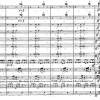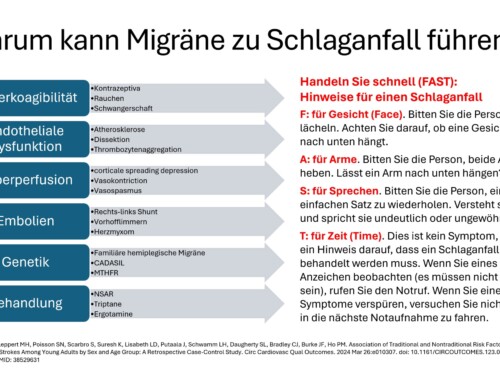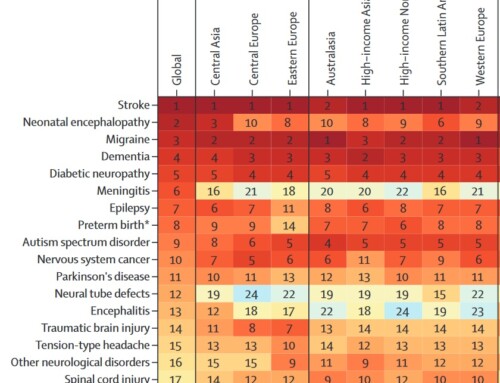Kiel/London December 12, 2013. For the composer Richard Wagner, chronic migraines were “the main plague” of his life. Researchers at the Kiel Pain Clinic have now been able to prove for the first time that the experience of torment is very clearly reflected in his most famous works. The study will be published on December 12, 2013 in the British Medical Journal (BMJ).
“The experience of suffering and pain is discussed and made tangible in many places in Wagner’s works in an unprecedentedly accurate way in the history of music,” says Prof. Dr. Hartmut Göbel, migraine specialist and chief physician at the Kiel Pain Clinic. And that is by no means a coincidence. In a study, Göbel and his co-authors managed to prove that the composer was plagued by severe migraine attacks that lasted for days - and his suffering from them flowed into his compositions. “Richard Wagner translated his experience of pain into music, poetry and staging as a total work of art. “Following generations can experience Richard Wagner’s feelings and perceptions directly,” says Göbel.
The study shows this, among other things, using the example of the beginning of the first act of Wagner's opera Siegfried : a swelling hum, the buildup to a pulsating, throbbing rhythm with shrill hammering, then the singer's exclamation: “Forcible plague! Effort without purpose!” For pain researchers there is no doubt that Wagner has set the beginning of a migraine attack to music. From the announcement with a dull throbbing to the pulsation of pain at the peak of the attack: the classic course of a migraine attack can be traced bar by bar from the music. The experts even found passages in which Wagner set an aura - the neurological accompanying symptoms of a migraine with flickering in front of the eyes - to music and staged it in a shimmering, flickering melodic line with a zigzag pattern. The experimental flicker frequency in the research laboratory during a migraine aura corresponds to the musical tempo chosen by Wagner.

Cosima Wagner (née Liszt), Richard Wagner, Franz Liszt and Hans von Wolzogen in the Villa Wahnfried, Bayreuth, Upper Franconia, Germany. Richard Wagner usually wore a head covering even in closed rooms, which was considered standard prevention against headaches at the time. Painting by Wilhelm Beckmann 1881. Source: Richard Wagner Museum, Lucerne.
In Richard Wagner's memoirs and letters as well as in the diary entries of his second wife Cosima Wagner, Richard Wagner's severe headache suffering is described in detail. The composer himself complained in detail about his “nervous headaches” while working on the composition of the opera Siegfried .
When analyzing Wagner's notes and correspondence, the scientists found that in many places his work was inspired by his suffering. Migraines often made it completely impossible for him to compose. Then the pain was so severe that he “could no longer write down a beat.” In fact, the composer interrupted his work on the Siegfried opera and the Ring cycle for more than a decade.
“In Wagner’s time there was no effective treatment for migraines,” says Hartmut Göbel. “Today we could treat him effectively.” Wagner would probably have been able to write significantly more and even more complex works. But the question is also: “What would they have sounded like?”
In a video accompanying the publication, the researchers use music examples from the highly acclaimed production of the opera Siegfried (2009) by Anthony Pilavachi at the Lübeck Theater to explain how Richard Wagner implemented migraines in his work.
Link to the German language video for the publication
The original study by the authors Carl Göbel, Anna Göbel and Hartmut Göbel will appear on Friday, December 13, 2013, in the renowned Christmas issue of the British Medical Journal:
Göbel CH, Göbel A, Göbel H: “Compulsive plague! Pain without end!” How Richard Wagner played out his migraine in the opera Siegfried. BMJ 2013;347:6952
Public link to paper: http://www.bmj.com/cgi/doi/10.1136/bmj.f6952
Link to english video abstract: http://youtu.be/Mg1z9RoZR50
Link to BMJ Press Release
Contact:
Prof. Dr.
Hartmut Göbel, Pain Clinic Kiel, Migraine and Headache Center
Heikendorfer Weg 9-27, 24149 Kiel
Tel.: 0431-20099150
Email: hg@weckklinik.de
Web: https://krebsklinik.de














Great and very deserving.
I was in the pain clinic in February 2012 and have had my migraines under control since then, and I can't thank Prof. Göbel enough for that!